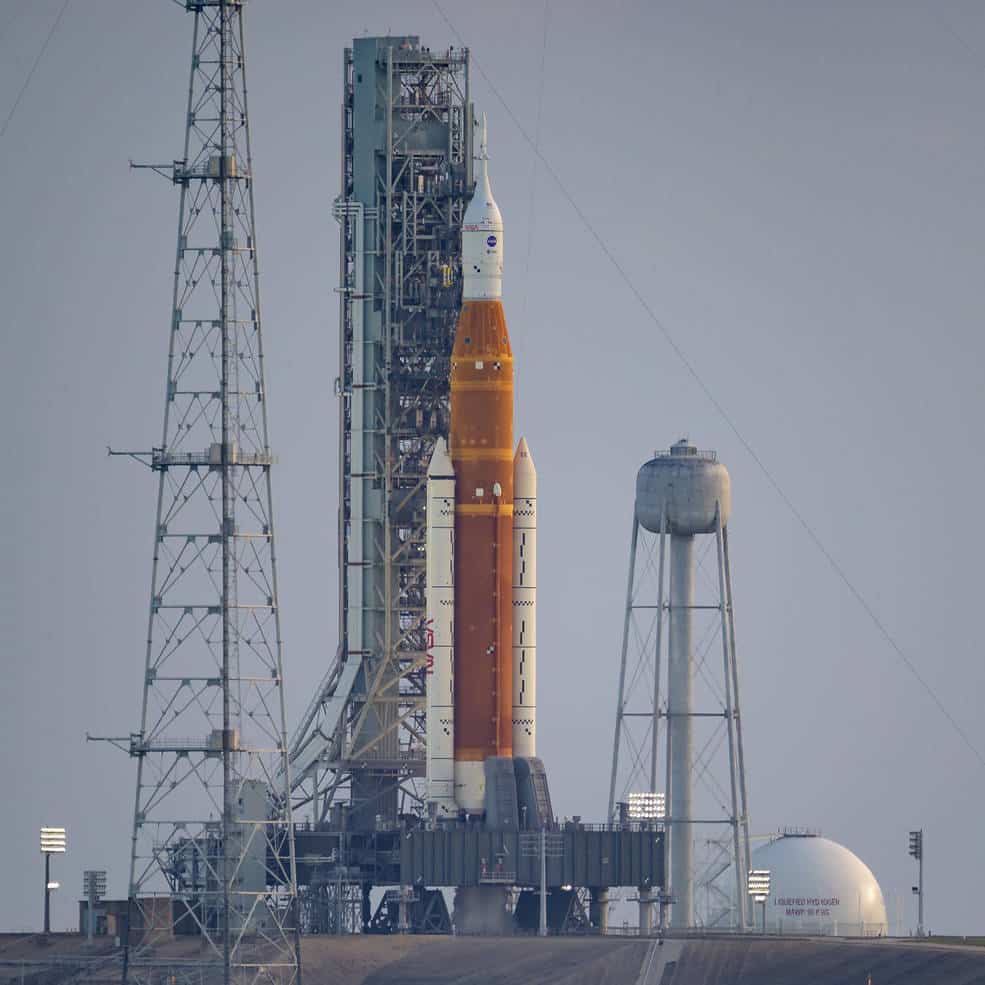Aerospace
The Artemis 1 was successfully launched by NASA. from the Cape Canaveral, Florida-based Kennedy Space Center Live Updates
The Artemis 1 was successfully launched by NASA. from the Cape Canaveral

Latest updates : Orion’s solar arrays have completed their deployment. The arrays are drawing power, and early data suggests good performance. The next milestone will be a perigee raise maneuver targeted for approximately 2:41 a.m. EST to raise Orion’s orbit in preparation for the critical trans-lunar injection that will send Orion to the Moon.
Latest updates: The Space Launch System core stage main engine cutoff is complete, and the core stage has separated from the interim cryogenic propulsion stage and Orion spacecraft. The next milestone is the deployment of Orion’s solar arrays, scheduled to begin approximately 18 minutes after launch.
Updates : The service module fairing and launch abort system have successfully separated from the Orion spacecraft. The SLS core stage will continue to fire until about 8 minutes after launch.
From the NASA. Kennedy Space Center in Cape Canaveral, Florida, the Artemis program of NASA has taken off. There are no crew members on the vehicle. On November 16, at 12:17 IST, the SLS rocket blasted off from the Kennedy Space Center. A little while later, Orion and the top stage were cut off and separated from the rocket’s core stage.
All four of Orion's solar arrays have deployed. pic.twitter.com/4DtzRO3Bl3
— Orion Spacecraft (@NASA_Orion) November 16, 2022
The mission management team has polled “go” to proceed with the terminal count sequence. The launch director is also “go” and teams have set a new target launch time of 1:47 a.m. EST and the countdown clock resumed at 1:37 a.m.
With approval from the launch director and managers, a series of countdown milestones for the Artemis I terminal count to launch will be initiated by the Ground Launch Sequencer at T-10 minutes:
The first mission in NASA’s Artemis program, designated officially as Artemis I, is an unmanned Moon orbiting mission that marks the debut of the Space Launch System (SLS) rocket and the entire Orion spacecraft. On November 16, 2022,
EST (0604 UTC). During #Artemis I, Orion will lift off aboard the Space Launch System (SLS) rocket, and travel 280,000 miles (450,000 km) from Earth and 40,000 miles (64,000 km) beyond the far side of the Moon, carrying science and technology payloads to expand our understanding of lunar science, technology developments, and deep space radiation.
At the Kennedy Space Center in Cape Canaveral, Florida, Artemis I will be the first integrated flight test of NASA’s deep space exploration system, which includes the Orion spacecraft, Space Launch System (SLS) rocket, and ground equipment. Artemis I, the first of a series of more difficult missions, will be an unmanned flight that will lay the groundwork for human deep space exploration and shows our willingness and capacity to take human civilization to the Moon and beyond. The unmanned Orion spacecraft will launch on the most potent rocket in the world and, over the course of about a three-week mission, will travel thousands of miles beyond the Moon, farther than any spacecraft built for humans has ever flown.

Aerospace
Boeing Transfers Rocket Stage to NASA, Paving Way for Human Moon Mission

Boeing has achieved a significant milestone by providing NASA with the second core stage of the Space Launch System (SLS) rocket.
This crucial component, crafted at NASA’s Michoud Assembly Facility (MAF), is set to propel the Artemis II crew into lunar orbit, marking humanity’s return to deep space after a 50-year hiatus.
The monumental Boeing-built rocket stage, the largest element of the Artemis II mission, will embark on a journey aboard the Pegasus barge, traveling 900 miles to NASA’s Kennedy Space Center.
Comparison of two legendary aircraft B777x vs B747 aircraft:Click here
Upon arrival, it will be meticulously integrated with other essential Artemis II components, including the upper stage, solid rocket boosters, and NASA’s Orion spacecraft within the iconic Vehicle Assembly Building. This intricate integration process is a vital step toward the eagerly anticipated Artemis II launch, slated for 2025.
“Boeing-built products helped land humankind on the moon in 1969, and we’re proud to continue that legacy through the Artemis generation,” remarked Dave Dutcher, vice president and program manager for Boeing’s SLS program. “Together, with NASA and our industry partners and suppliers, we are building the world’s most capable rocket and paving the way to deep space through America’s rocket factory in New Orleans.”
NASA, Lockheed Martin Reveal X-59 Quiet Supersonic Aircraft:Click here
The delivery of Core Stage 2 marks a significant achievement in the evolution of the SLS rocket. Towering over 200 feet and powered by four RS-25 engines, this core stage, coupled with two solid-fueled booster rockets, will generate a staggering 8.8 million pounds of thrust. This immense power is crucial to launching Artemis II and future missions into the vast expanse of space.
The SLS rocket stands unparalleled in its capability to transport both crew and substantial cargo to the moon and beyond in a single launch. Its extraordinary capacity will facilitate the delivery of human-rated spacecraft, habitats, and scientific missions to destinations including the moon and Mars, ushering in a new era of space exploration.
-

 Travel1 week ago
Travel1 week agoAir India to Expand US Operations with Three New Routes After a Decade
-

 Travel2 weeks ago
Travel2 weeks agoWhy We Should Avoid These Stamps in a Passport
-

 Airlines1 month ago
Airlines1 month agoInvestigations Reveal Fake Chinese Titanium in Boeing and Airbus Jets
-

 Tech4 weeks ago
Tech4 weeks agoChina’s CATL Plans 1,800-Mile Electric Plane Launch by 2027
-

 Airport3 days ago
Airport3 days agoTop 10 Largest Airports in the World by Size
-

 Aerospace4 weeks ago
Aerospace4 weeks agoChina’s Fighter Jets Turn Wings into Autonomous Drones
-

 Airlines4 days ago
Airlines4 days agoAir India Rolls Out A350s for Delhi-New York JFK and Newark Routes
-

 Defence3 weeks ago
Defence3 weeks agoBoeing Enhances Chinook with New Engines and Block II Upgrades at $96 Million







